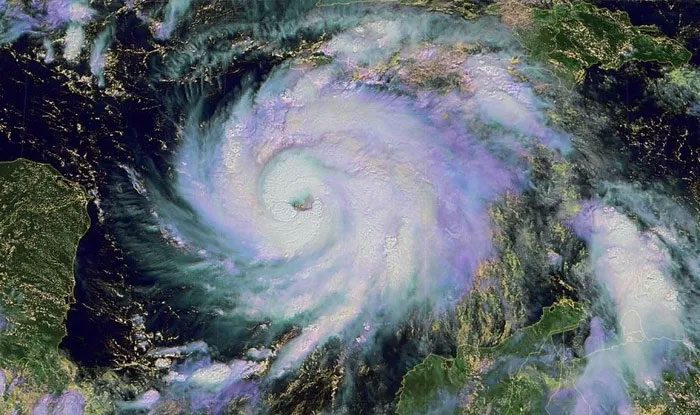The transition from El Niño to La Niña creates a devastating impact on humanity, the environment, and ecosystems on Earth. Accordingly, the La Niña phenomenon triggers a series of extreme weather events worldwide.
La Niña is a phenomenon characterized by unusually cooler sea surface temperatures in the central and eastern Pacific Ocean at the equator, occurring in a cycle similar to or less frequent than that of El Niño.
Typically, right after the El Niño phenomenon ends, La Niña will occur, causing numerous storms in the Atlantic while reducing the risk of storms in the Pacific. La Niña occurs in cycles of 2 to 7 years, usually beginning to form between March and June each year and having the most significant impact from late in the year until February of the following year.
The cause of the La Niña phenomenon is due to sea surface temperatures being lower than the standard temperature (the standard temperature is approximately 25 degrees Celsius) by 0.5 degrees Celsius or more. This phenomenon is the opposite of El Niño, formed when trade winds in the equatorial region strengthen, bringing cold ocean currents from the deep sea to the surface. This phenomenon has appeared in the Pacific region as the Northern Hemisphere prepares to enter winter months.

La Niña caused Hurricane Mitch – the “second deadliest” event in human history in 1998. (Photo: Lolwot)
According to many studies, the transition from El Niño to La Niña results in a devastating impact on humanity, the environment, and ecosystems on Earth. Accordingly, the La Niña phenomenon causes a series of terrifying extreme weather events globally, such as spring floods, record snowfall in winter, and droughts in summer…
The Secretary-General of the World Meteorological Organization (WMO), Petteri Taalas, stated: “El Niño and La Niña are the main drivers of the Earth’s climate system. However, every natural climate event now exists within the context of human-induced climate change, which is raising global temperatures and exacerbating weather phenomena, impacting annual rainy seasons and complicating disaster forecasting and response.”
Moreover, La Niña can also affect the Southwest Indian Ocean tropical cyclone season, reducing its intensity. Southeast Asia, some islands in the Pacific, and the northern region of South America are expected to receive above-average rainfall. In India, La Niña means the country will experience more rainfall than usual, leading to flooding.
Furthermore, the devastating impacts of La Niña also lead to a decrease in global food supplies, crop failures, and persistent famine in poorer countries in Africa and Asia…
In particular, the African and Central Asian regions will experience below-average rainfall due to the influence of La Niña. The WMO warns that East Africa will face drier than normal conditions, along with the existing impacts of the desert locust invasion, which could further exacerbate food insecurity in the region.
Historically, the La Niña phenomenon caused Hurricane Mitch, the “second deadliest” event in human history in 1998, which left a terrifying legacy for those who survived to this day. The superstorm Mitch formed in the Atlantic with winds of 290 km/h, a Category 5 hurricane that claimed the lives of 22,000 people and left 2.7 million homeless, causing damages amounting to 6 billion USD (in 1998) in the two Central American countries of Nicaragua and Honduras.
La Niña may lead to a colder winter this year
The U.S. Climate Prediction Center forecasts that there is nearly a 90% chance that La Niña will persist until February 2022. During months with La Niña, temperatures will be lower than normal, prompting meteorological agencies to issue warnings about a harsh winter.
As early as October, many Asian countries experienced unusual cold spells. South Korea recently endured a cold snap, with Arctic air sweeping in, causing temperatures in many areas to drop below freezing, and frost appeared on the morning of October 17, marking the coldest mid-October morning in 64 years in the Land of the Morning Calm.
On the same day, China experienced freezing temperatures 20 days earlier than the average date of November 8. The cold snap dropped temperatures in many places across Hebei, Shandong, Henan, Anhui, and Jiangsu provinces to 10 degrees Celsius within 24 hours, with many residents remarking that it felt like “the quick freeze mode” of a refrigerator.





















































